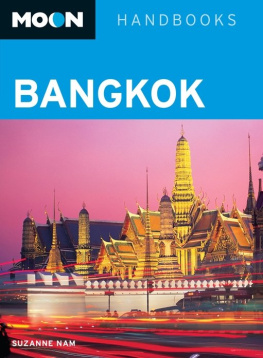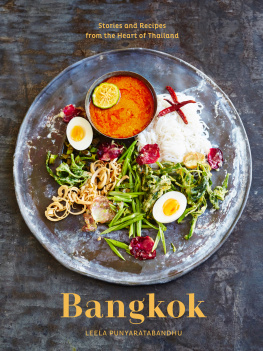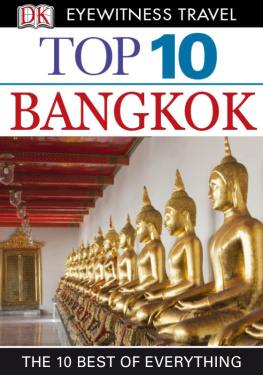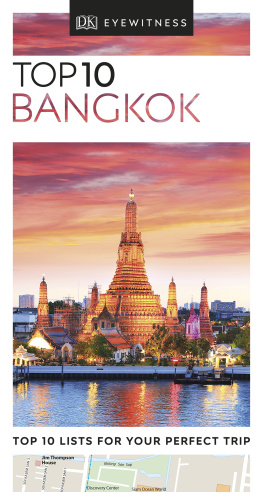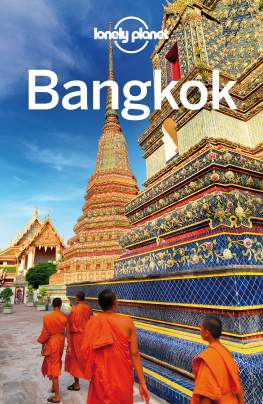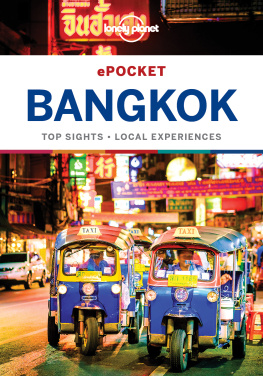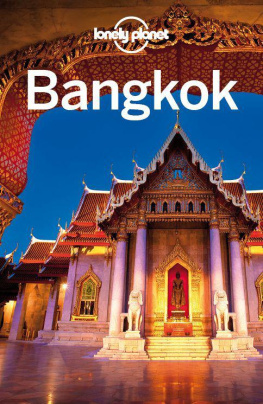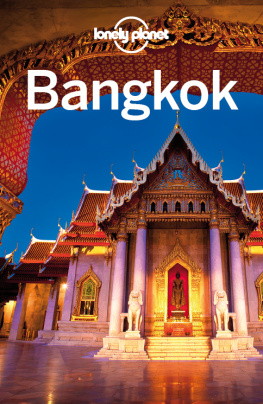cha yen iced tea
chedi pagoda
chofa spire-like ornamentations that adorn temple roofs
darma rule of Buddhism
gaeng or kaeng curry
gai chicken
gai yang grilled chicken with smoky, spicy sauce
guay teow traditional noodle soup
hat beach
khai eggs
khanom chin thin rice noodles with curry
khanom Thai coconut puddings scented with jasmine and other unexpected flavors
khan toke the formal northern meal in which various dishes are shared and hands are used
khao mountain
khao phad fried rice
khao soi soft noodles in sweet, savory rich yellow curry, covered with crispy fried noodles and usually served with chicken or beef
khlong canal
ko island
mahout elephant trainer
mai pen rai no worries
mai phet not spicy
mu or moo pork
muay Thai Thai boxing
naga sacred snake
nam phrik spicy dips served with a selection of fresh vegetables
nam tok marinated meat salad with sliced grilled beef or pork
pad thai stir-fried noodles with peanut sauce
ped duck
phra that relic of the Buddha
prang tower
prasat castle
Ramakien the Thai version of the Ramayana
roti pancake-like cooked dough, served with either sweet or savory fillings or dishes
sabai to be relaxed or comfortable
sala pavilion or sitting area
samlor rickshaw-like bicycles
satay grilled meat
soi side street
som tam shredded green-papaya salad, with fresh long beans, tomatoes, dried shrimp, peanuts, lime juice, fish sauce, garlic, palm sugar, and chilies
song thaew pickup trucks with benches in the back that essentially serve as a cross between a bus (they usually run on fixed routes) and a taxi (you hail one down and just climb in)
tambon community
tom yam kung spicy, aromatic soup with shrimp
tuk tuk three-wheeled motorcycle taxi with a roof
ubosot coronation hall
wai gesture of greeting and a sign of respect where people put their hands together in a prayerlike motion and bow their heads at each
other
wat temple
wiharn Buddhist assembly hall
yam som o pomelo salad with shrimp
Unless you are staying exclusively in five-star resorts that cater to English-speaking foreigners, youll notice pretty quickly that most people in the country speak little English. Though English-language studies are compulsory for all students, even most college graduates do not speak English at any level of fluency. That fact, coupled with a different script, makes Thailand a bit of a challenge at best and frustrating at worst. Expect communication problemsyou are traveling in a foreign country. Of course, the language barrier is a great opportunity, too. Although its a travel clich, its still a sweet experience when little children come up to you to practice saying hello, and students of all ages will usually be happy to try out a little English on willing foreigners, although they may be too shy to engage you first. If you are looking to spend an extended period of time here, there are plenty of places you can teach English, either on a volunteer or paid basis.
The Thai language, with its confusing tones and difficult-to-decipher script, is too difficult to master before taking a vacation. But learning a few words and phrases will make all the difference, especially words and phrases such as hello and thank you. No one in the country will expect that you speak the language fluently as a vacationer, so a little bit of Thai will go a long way in terms of breaking the ice. Youll find that people across the country will react positively to any effort you make (even if that positive reaction involves a little bit of laughter).
The Thai alphabet has 44 consonants, more than 20 vowel forms, and four tone marks. The alphabet was invented by King Ramkhamhaeng in the 13th century and was undoubtedly influenced by the Khmer alphabet in use at the time. That may not help too much in understanding what the letters mean; many foreigners find the script difficult. If youre just here on vacation, you wont have the time to do much more than familiarize yourself with the way it looks, but if you want to learn the language, youll need to master Thai script.
Thai is a tonal language with five toneslow, high, mid, rising, and falling, and a words meaning will vary depending on how it is pronounced. Say the name Bob out loud as if you were yelling at your little brother, then as though you were picking up the phone and wondering if Bob was on the other line. To speakers of non-tonal languages, Bob is Bob, though youve intonated the word differently in different contexts. To speakers of tonal languages, the first pronunciation and the second can mean vastly different things. Tones are identified in Thai script through the use of different consonants, vowels, and tone marks, depending on the tone you wish to express, but, as Thai script can take months of study to master, your best bet is to memorize a few basic expressions and try them out when you arrive. Listen carefully to the way native speakers say common phrases (youll hear plenty of hellos and thank yous) and do your best to imitate them.
A tonal language also presents another challenge for visitors, as tones are impossible to replicate with the paltry 26-letter Roman alphabet. The word khao, for example, means white, mountain, rice, news, he/she, knee, or to enter, depending on which tone youre using and whether the vowel is long or short. Using the Latin alphabet to transliterate Thai words is just a rough approximation, which is why Thai speakers will often misunderstand you or find your pronunciation of a word incomprehensible despite the fact that you are pronouncing it exactly the way it is spelled in Roman letters. This is also why youll see Thai words spelled in English in so many different ways Petchaburi and Petburi or ko and koh are just two common examples.
Weve used the Thai Royal Institute system of transliteration in this book, as it is the official system and the one used to translate place names on road signs and other notices. This system isnt perfectit ignores tones and vowel length completelybut is the least complicated and doesnt require that you learn a new system of tone marks; its an imperfect compromise but the best one for someone visiting Thailand for vacation.
In the case of proper names of sights, restaurants, shops, and lodging, weve used either whatever spelling is approved by the Tourism Authority, what is printed on commonly available maps, what the business goes by, or what is printed on Thai street signs, whether or not it is consistent with the Thai Royal Institute system.
Even if you cant make out many Thai words, you will notice that nearly everyone you speak with ends their sentences with either ka or kap . These are polite particles meant to convey respect, but in truth they are used nearly universally and regardless of whether you are speaking with your boss or the teenage cashier at 7-Eleven. Which one you use depends not on what you are saying or who you are speaking to, but your gender. Women always end their sentences with ka, men with kap , and you should be particularly careful about making sure you do, too. Youll probably notice that the polite particles are also used on their own, meaning the equivalent in English of okay, go on, or yes.
Remember that everything you say should end with a polite particle. Here weve listed sawadee as hello, but you would almost never hear that phrase spoken without a ka or kap following it. Hello/Goodbye Sawadee

